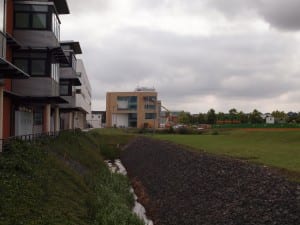
We’re just about to move into the Phase 1 part of our new building. Packing up and moving offices will be complete on Monday 16th August for operating out of the Engineering Hub.
Moving our research labs will be a longer staged process.
Research activity at the University of Lincoln
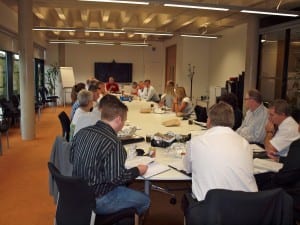
The University of Lincoln School of Engineering and City of Lincoln Council Business Services Team collaborate in events to understand the main drivers for successful marketing and development of the engineering sector in the region.
We are working together to put Lincoln engineering ‘on the map’ in terms of investment and relocation opportunities.
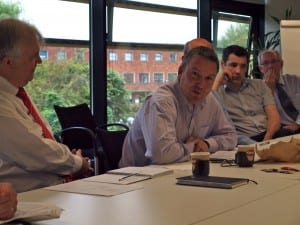
Attending the event were:
| Bifrangi UK Limited |
| Castlet Limited |
| Cenex |
| City of Lincoln Council |
| Coptech Technology Limited |
| Destec Engineering |
| Dynex Semiconductor Limited |
| e2v |
| Education Business Partnership |
| Hindles of Lincoln |
| Hoval |
| ITP Engines UK Limited |
| Industrial Marine Power |
| James Dawson & Son Limited |
| Lincat Group Plc |
| Lincoln College |
| Lincoln Crankshaft & Machine Limited |
| Lincoln Diesels |
| Lincolnshire County Council |
| Lincolnshire & Rutland Employment & Skills Board |
| Micrometric Limited |
| Napier Turbochargers Limited |
| NMB Minebea UK Limited |
| North Lindsey College |
| Optima Graphic Design Consultants Limited |
| Praxair |
| Rakon UK Limited |
| Rilmac (Holdings) Limited |
| Siemens Industrial Turbomachinery |
| Specialist Heat Exchangers |
| University of Lincoln |
| VXI Power Limited |
| Wyman-Gordon Limited |
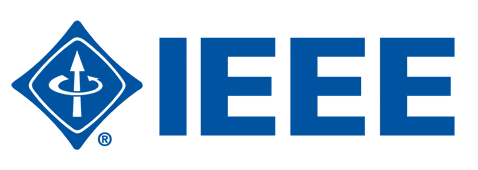 Engineering’s Dr Wing-Kuen Ling (better known to us all as ‘Bingo’) has been given the prestigious invitation to join the Institute of Electronic and Electrical Engineers’ Circuits and Systems Society Technical Committee on Nonlinear systems.
Engineering’s Dr Wing-Kuen Ling (better known to us all as ‘Bingo’) has been given the prestigious invitation to join the Institute of Electronic and Electrical Engineers’ Circuits and Systems Society Technical Committee on Nonlinear systems.
The IEEE is the world’s largest society for the advancement of technology.
The IEEE Circuits and Systems Society is the leading organization that promotes the advancement of the theory, analysis, design, tools, and implementation of circuits and systems. The field spans their theoretical foundations, applications, and architectures, as well as circuits and systems implementation of algorithms for signal and information processing.
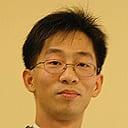
The Society brings engineers, researchers, scientists and others involved in circuits and systems applications access to the industry’s most essential technical information, networking opportunities, career development tools and many other exclusive benefits.
Local members with similar technical interests engage in professional exchange through the Society’s 10 regional chapters in the United States, Canada, Europe, the Middle East, Africa, Latin America, Asia, Australia and the Pacific.
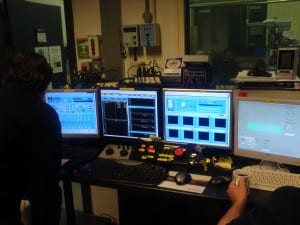
It’s only 12 weeks until we move into our new building. On the ground floor are some of our experimental laboratories, in particular our engine test cells. The cells each have an associated control centre separated by safety materials, from where experiments can be conducted remotely.
Pictured is the control centre for the Lotus Free-Piston Engine when it was under development in the Test Cells at the University of Loughborough, with the actual engine cell visible in the background through double safety glass.
The task I’ve got now is to move our experimental engines into the new build, and get them all running, commissioned and most challenging of all, correctly wired up into the data acquisition and control systems.
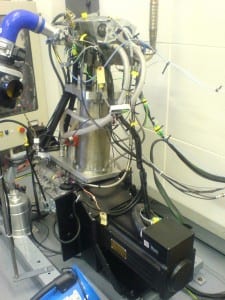
The picture of the Lotus engine gives an indication of the amount of sensor and actuator cabling associated with each engine.
Engines are generally under computer control via either LabView, or running Matlab and Simulink developed control algorithms under DSpace. It’s quite rare for me to hand write code these days, DSpace compiles control structures from simulink into C, and downloads it onto ta converters.he host control microprocessor and associated A-D and D-A converters.
A lot of our engine laboratory equipment has been stored at the ThinkTank until the move, so we’re just starting the process of going through it all and allocating space.
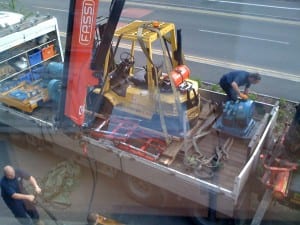

I have trawled some more photos of Research Brainstorming and Sandpits out of the vaults. There are lots of different methods of brainstorming for research projects and solutions, so I’ve posted some ideas from another Sandpit which was operated by Proctor and Gamble.
The method centres around the IWWMW (which stands for ‘In What Way Might We?’) wall. This wall acts as a focus for the day’s (or week’s) activities.
In the first instance, after a problem briefing, the wall is open to place posts centred around the core problem issues ‘in what way might we solve x?’
Only two types of post are allowed: proposals and IWWMWs. Proposals group with problem issues, and suggest avenues of technology, research or solutions. At no time is criticism allowed, the only way to address proposals is via another layer of IWWMWs.
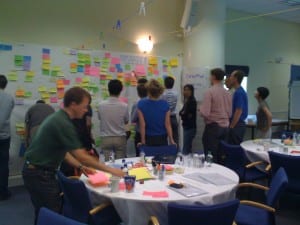
Good sport is to be had during the ‘re-alignment’ sessions, where everyone has the opportunity to move any or all the posts around on the wall to bring associated problems and solutions together into research projects. Sometimes it seems like the entire wall is in movement at the same time.
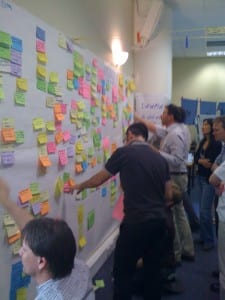
This very basic methodology is one which I’ve found to be the most effective for brainstorming and working up research proposals. A session like this can easily generate a dozen Research Council standard proposals between a couple of dozen people if everyone buys into the process.
